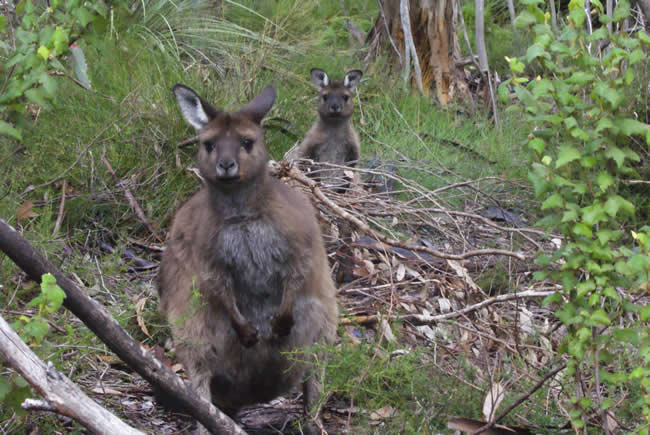Taking pictures of wildlife can be challenging – they won’t sit still. And the best shots are when they are moving. Good wildlife shots are a delight. Australia has many varieties of wildlife, from the cute and cuddly koala – don’t try it, those claws are sharp! – to the fearsome ‘saltie’, the saltwater crocodile of northern Australia.

Koole Imaging is based in Queensland, in the harbour city of Gladstone. He says, among other things
‘…Australia is an amazing diverse country too beautiful not to share with the world! … ‘
ThisisAustralia.com.au has permission to share them on our pages too. We do so with appreciation.
All Koole Imaging photos are Copyright © Koole Imaging.

Copyright © Koole Imaging
Salties are dangerous, and have been known to attack humans, sometimes with fatal results.

Copyright © Koole Imaging
Salties are dangerous, and have been known to attack humans, sometimes with fatal results. They appear slow and ponderous, but in their element, water, they are quick and deadly in their attacks.
Australia large map. Great planning map!

Copyright © Willem Schultink
Often called a goanna in Western Australia, they are actually lizards or skinks.
Their name comes from their bright blue tongue, which they will display when threatened. They tend to be monogamous, with the same two partnering every year for up to twenty years. They give birth to three or four young which establish themselves nearby so a colony of them can become quite well established over time.
I well remember them from my youth in Western Australia because of their habit of lying on the road sunning themselves. Not always a good idea – quite a few were squashed by passing cars.
Info sourced from Pilbara Pythons

Copyright © Koole Imaging
I have often watched them play in the bow-wave of my sailboat, near enough to touch – though they would never let you, always moving just out of reach – with three or four taking turns to surf the bow wave … and then come round and do it again.

Copyright © Koole Imaging
I’m not sure what sort of kangaroo/ wallaby this is. Can anyone enlighten me?
Australia large map. Great planning map!

Copyright © Koole Imaging

Copyright © Koole Imaging
A swamp wallaby (at least that is what I think it is), pictured at South Stradbroke Island, in Queensland.

Copyright © Fred Vanderbom
Today Maria Island is a wildlife sanctuary for native birds, mammals including lots of wombats, and a colony of Tassie Devils which we found very reclusive; they are threatened by an infectious cancer.
Australia large map. Great planning map!

Copyright © Koole Imaging.
More info on koalas here.

Copyright © Koole Imaging

Copyright © Koole Imaging
The Southern Cassowary is the third tallest and second heaviest living bird, smaller only than the ostrich and emu. They are part of the ratite group of birds, which includes the ostrich and the emu. They are very shy birds, but when they are provoked, they have been known to attack both humans and animals. They are native to northern Australia, tropical forests in New Guinea, and surrounding islands.
More info on Cassowaries can be found at Perth Zoo

Copyright © Koole Imaging
More info on the Australian Pelican can be found at Perth Zoo

Copyright © Koole Imaging
They are part of the ratite group of large flightless birds, which includes the ostrich and the cassowary.
Australia large map. Great planning map!
Emus can move very quickly. I once had an old man emu running alongside the car on the Eyre Highway a few miles east of Norseman in Western Australia. He was a big powerful bird and he matched the car’s speed of a bit more than 60 kilometres and hour for a short distance, before he decided that the scrub was a better option! It was beautiful to see him run, with his feathers flowing in the wind and his body seeming to flow over the ground.
Watch John Williamson sing a humorous song about Old Man Emu in this old black and white clip from the 1970s:

Copyright © Koole Imaging
Quite spectacular markings for a spider. I still don’t like them, though!

Copyright © Koole Imaging
Scorpions are arachnids, which means that they are related to spiders. There are 29 species of scorpions found in Australia. The smallest are just 2 cms long; the largest can get to 12 cms.
Scorpions can give you a pretty painful sting with inflammation that lasts for several hours, but otherwise they are not dangerous to humans. A cold pack to reduce the discomfort is the way to treat it – though if it doesn’t fix it a doctor is the way to go.
Australia large map. Great planning map!
I remember as a boy in Western Australia sitting on an old fallen tree trunk, watching the grader work on the road out front of our place. I just lifted a piece of bark and there was a large scorpion right there. I was pretty wary of it and got off the log pronto! But that is their environment – under bark, rocks, etc… Once I got over the fright I had a good look at the scorpion – from a safe distance – and it was quite interesting.
More info on scorpions at The Australian Museum

Copyright © Koole Imaging.

Copyright © Koole Imaging.
The platypus is a semi-aquatic mammal, and is a monotreme, a mammal that lays eggs instead of giving live birth.
The young when they are hatched are quite vulnerable, and blind and hairless. The mother produces milk from pores in her skin and the can lap it up. Males have a spur on their hind legs which has a poison. This is not normally fatal to humans, but causes very intense pain.
Info sourced from Wikipedia
This page Copyright © ThisisAustralia.au


All the labels you use every day, with excellent service! EveryLabels.com.au
Australia large map. Great planning map!

